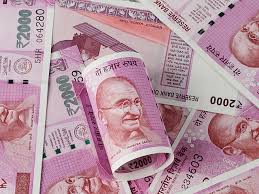Rupee breaches 69/dollar level; traders await RBI support

The rupee fell to an all-time low against the U.S. dollar on Thursday tracking Asian peers, with weakening macro-economic fundamentals on the domestic front also weighing on the currency.
The dollar’s sharp gain overnight coupled with falls in Asian peers caused the drop in early trade, traders said, adding they were hopeful the central bank would step in to prevent further losses.
The partially convertible rupee was trading at 68.92/93 to the dollar at 0542 GMT, after hitting a life low of 69.0950 earlier in the session, and sharply lower than its previous close of 68.65/66.
The rupee’s last record low was 68.8650 per dollar, hit on Nov. 24, 2016.
The dollar was, however, steady against its peers on Thursday, having failed to extend overnight gains amid conflicting signals from Washington on a proposal to restrict Chinese investment as the bitter U.S.-China trade row kept financial markets on edge.
On the domestic front, a widening current account deficit (CAD) due to higher global crude oil prices, and steady capital outflows have weighed on the rupee this year.
The rupee has shed 7.7 percent so far this year at its record low, making it the worst performing currency in Asia, followed closely by the Philippine peso.
“Weakening at this pace shatters confidence. Markets expect RBI (Reserve bank of India) to manage the currency more effectively. The pressure on INR is high, thus in the absence of major action from regulators, 70 levels can be seen,” the head of currency and debt trading at a foreign bank said.
“The RBI has been effectively managing (the rupee) over the years, and they do have ample firepower to manage sharp falls.”
India’s foreign exchange reserves stood at $ 410.07 billion as of June 15, latest data from the central bank showed.
Oil prices have been rallying for much of 2018 on tightening market conditions due to record demand and voluntary supply cuts led by the Middle East-dominated producer cartel of the Organization of the Petroleum Exporting Countries (OPEC).
India’s January-March CAD widened to $ 13.0 billion, or 1.9 per cent of GDP, from $ 2.6 billion, or 0.4 per cent of GDP, from a year earlier.
Despite the rise in CAD, it remains modest relative to GDP and is largely financed by equity inflows, including foreign direct investment, Moody’s said in a note on Thursday, adding that the large foreign exchange reserves provided a good buffer.
“India’s low dependence on foreign-currency borrowing to fund its debt burden limits the risk of currency depreciation transmitting into materially weaker debt affordability,” Moody’s added.
